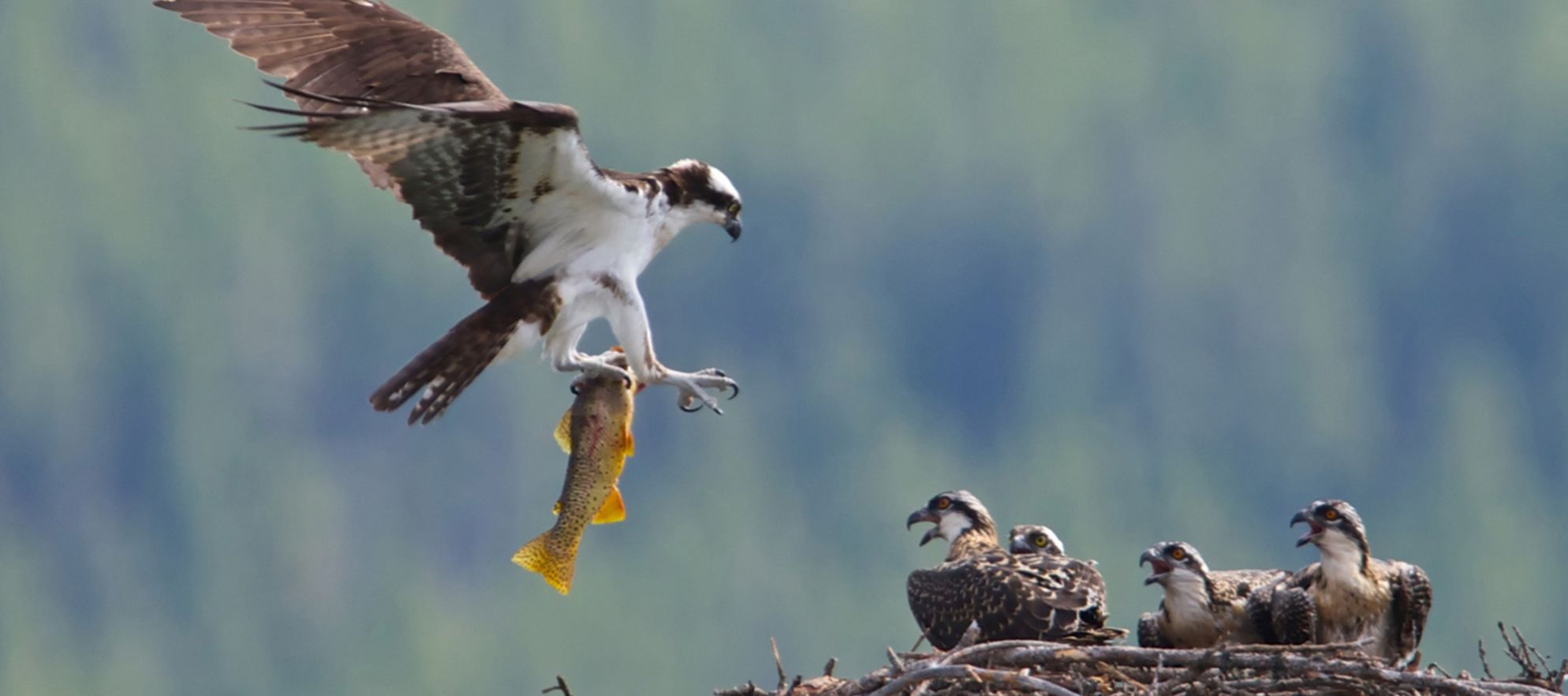5 Amazing Birds of Banff National Park
- Apr 23, 2018|
- Nature & Wildlife

It's birding season in the Rockies!
After a long winter, Banff is full of bird life again. From April until early July, we have birds courting and singing, and all species wearing their fine breeding plumage.
It's our favourite time of the year to get out there to look for unusual long-distance travellers, as well as our local mountain specialists. Great Divide Nature Interpretation offers guided bird watching tours from June 1 to July 15.
Over 300 species have been spotted in the park over the years, and it's hard to pick favourites from a list like that, but these five birds have interesting stories to tell.
Grey Jay
A nationwide poll in 2016 crowned the grey jay Canada's National Bird, and while it's not official yet, the jay is worthy of the honour. It's found in all ten provinces and three territories, but most importantly, it's tough, since it sticks around all year. Food is scarce during winter, so in fall, grey jays collect extra food to stockpile. Any seeds, fruits and insects they can't eat directly, they glue to trees using a special sticky saliva. In the dark heart of winter, they retrieve the cached food. So let's call them both tough and smart.
Rufous Hummingbird
Inch for inch, rufous hummingbirds are a legitimate contender for the long-distance migration crown. Despite weighing only as much as a nickel, they travel between Mexico and the Canadian Rockies twice a year. Some of them even make it as far north as Alaska! In late summer, they fuel up on wildflower nectar, convert it into fat, and head south, flying hundreds of kilometres non-stop on a tank of gas. Now that's fuel efficiency!
Osprey
The osprey is a real crowd-pleaser, plunging from on high into lakes and ponds to catch fish. Since fish are slippery, osprey talons are well adapted to hang on to the catch: their feet have special barbed pads on their soles for grip, and ospreys can reverse their outer toe so that two toes point forward and two backward for the perfect grappling hook. I once watched a guy fishing in a backcountry lake for an hour with no success. An osprey showed up, made one circuit around the lake, and then caught a fish on its first dive.
White-Tailed Ptarmigan
Imagine a little game hen that can become one with the background. That game hen is the ptarmigan – the master of camouflage! They will soon moult from their snow-white winter plumage into cryptic rock-coloured feathers. On a ski trip this winter, our lead skier travelled right into a little flock of ptarmigans, without even knowing they were there. When they flushed, she was so shocked and surprised, she couldn't help but give out a little scream. Watch for them at high elevations, well above the treeline.
American Dipper
A whitewater specialist, the dipper lives along the edges of fast-flowing streams, dunking itself right into the current to feed on aquatic insects and fish eggs in the stream bed. If you tossed a robin into a Rocky Mountain stream, it wouldn't last five minutes, but dippers come equipped to thrive in water that's only a few degrees above freezing, with everything from a heat-exchanger system in their legs and feet to nasal flaps that seal up their nostrils (yes, birds have nostrils!) when they're underwater.
Most of these birds and more can be found on interpretive guided birding tours with Great Divide Nature Interpretation - visit their Birding In The Rockies page for more information.